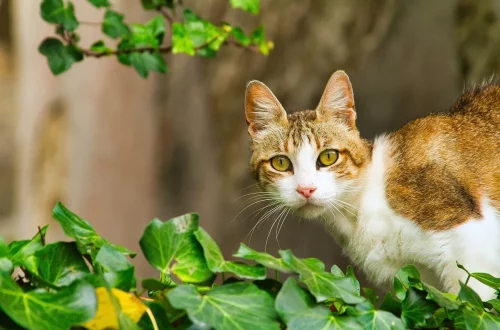
Does Catnip Go Bad and How to Store It Properly?
Catnip, a member of the mint family, has enchanted felines for centuries with its unique aroma and effects. This herb, scientifically known as Nepeta cataria, contains a compound called nepetalactone, which triggers a euphoric response in many cats. For pet owners, catnip can be a delightful addition to their feline’s playtime, often leading to playful antics and engaging behaviors. However, just like any other natural product, catnip has a shelf life, and understanding how to preserve its freshness is crucial for maximizing its benefits.
Many cat owners wonder about the longevity of catnip and whether it can lose its potency over time. Proper storage techniques can significantly affect the quality of catnip, ensuring that it remains effective and enjoyable for your pet. Factors such as exposure to light, air, and moisture can all play a role in diminishing the herb’s strength. By learning the best practices for maintaining catnip, you can provide your furry friend with a consistent source of enjoyment and stimulation. This article delves into the various aspects of catnip storage and its lifespan, helping you make informed choices for your beloved companion.
Understanding Catnip and Its Effects on Cats
Catnip is not just a simple herb; it possesses fascinating qualities that elicit various reactions from our feline friends. When cats encounter catnip, they may exhibit behaviors such as rolling, rubbing, purring, and even hyperactive playfulness. These responses can last anywhere from a few minutes to several hours, depending on the individual cat and its sensitivity to the herb.
The primary active compound in catnip, nepetalactone, interacts with the olfactory receptors in a cat’s nose, which can lead to a temporary state of euphoria. Interestingly, not all cats are affected by catnip; approximately 50% to 75% of cats show a reaction, which is believed to be hereditary. Kittens and elderly cats typically show less sensitivity to the herb, as the response tends to develop with age.
While catnip is safe and non-toxic for cats, moderation is key. Excessive exposure may lead to desensitization, where the cat no longer responds to the herb. It’s always good practice to introduce catnip gradually and observe your cat’s reaction. In addition to its playful effects, some cat owners use catnip as a tool to reduce stress or anxiety in their pets, creating a calming environment during travel or vet visits.
Understanding the effects of catnip is essential for enhancing your cat’s playtime experience. By using it wisely, you can ensure that your pet enjoys the herb’s benefits without becoming overwhelmed or uninterested.
Signs That Catnip Has Gone Bad
Like any herb or botanical product, catnip can lose its potency over time. Several signs indicate that your catnip may have gone bad or lost its effectiveness. One of the most immediate indicators is the change in aroma. Fresh catnip has a strong, minty scent, and if your catnip has lost its smell, it may no longer be effective.
Another sign of degraded quality is the appearance of the catnip itself. When catnip is fresh, it has vibrant green leaves and a pleasant texture. If the leaves have turned brown, are brittle, or show signs of mold, it’s time to dispose of the catnip. Moldy catnip can pose health risks for your cat, as ingesting mold can lead to digestive issues or other health complications.
Additionally, if your cat shows little to no interest in the catnip, it could be a sign that it has lost its potency. Cats are usually attracted to the aroma and will respond positively when the catnip is fresh. If you notice a lack of enthusiasm during playtime with catnip, it may be time to replace your stash.
Being aware of these signs can help you maintain a fresh supply of catnip and ensure that your cat continues to enjoy its playful effects. Regularly checking your catnip’s condition can lead to a more satisfying experience for both you and your feline friend.
Proper Storage Techniques for Catnip
To extend the life of your catnip, proper storage techniques are essential. Catnip should be stored in a cool, dark place, away from direct sunlight. Exposure to light and heat can degrade the quality of the herb, causing it to lose its potency more quickly. A pantry or cabinet is an ideal location for keeping catnip fresh.
Another critical aspect of storage is ensuring that the catnip is kept in an airtight container. Oxygen exposure can lead to oxidation, which diminishes the herb’s flavor and aroma. Glass jars with tight-fitting lids or resealable plastic bags work well for this purpose. If you have purchased loose catnip, consider transferring it to a suitable container immediately after opening.
Moisture is another enemy of catnip’s longevity. Keeping catnip dry is crucial, as moisture can lead to mold growth and spoilage. Avoid storing catnip in humid areas, such as near your kitchen sink or bathroom. Instead, opt for a dry environment to preserve its quality.
Lastly, labeling your catnip container with the purchase date can help you keep track of its freshness. By monitoring how long it has been stored, you can ensure that you replace it when necessary, keeping your pet’s playtime exciting and enjoyable.
Alternatives and Variations of Catnip
While catnip is a favorite among many felines, there are other herbs and plants that can provide similar stimulation and enjoyment. One popular alternative is silvervine, which is known to elicit a reaction in cats that do not respond to catnip. Silvervine contains two compounds, actinidine and iridoid, that can induce playful behavior in cats, making it an excellent option for diversifying their experiences.
Another herb worth exploring is valerian root. This herb has a calming effect on humans but can have an exciting impact on cats, similar to that of catnip. Valerian root can be found in various forms, including dried root, sprays, and cat toys infused with the herb.
For those who prefer a more natural approach, consider growing your own catnip or silvervine. Cultivating these herbs at home allows you to ensure their freshness and quality while providing your cat with a steady supply of stimulating play items. Plus, growing plants can be a rewarding hobby for pet owners!
Incorporating these alternatives into your cat’s play routine can not only keep them engaged but also prevent them from becoming desensitized to catnip over time. Each cat is unique, so experimenting with different herbs can help you discover what your feline friend enjoys the most.
In conclusion, while catnip is a beloved treat for many cats, it is essential to recognize its shelf life and the best practices for storing it. By being mindful of its quality, observing your cat’s reactions, and exploring alternatives, you can provide a delightful and enriching experience for your furry companion.
**Disclaimer:** This article does not constitute medical advice. For any health-related concerns regarding your pet, please consult a veterinarian.




